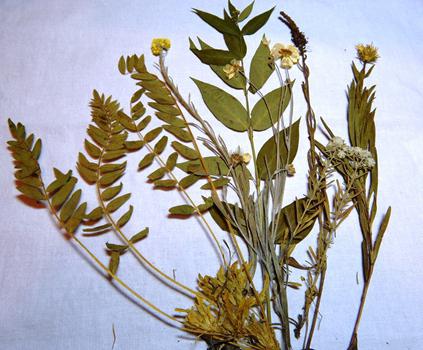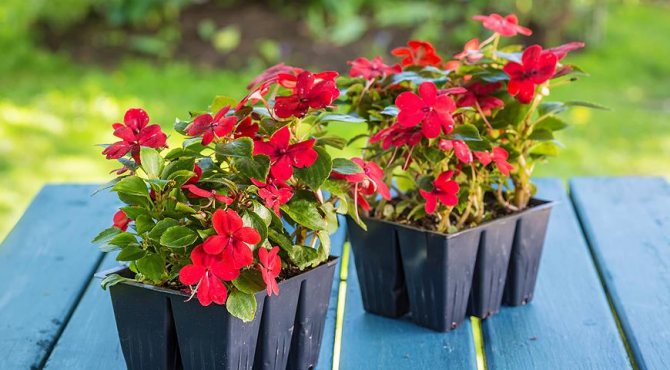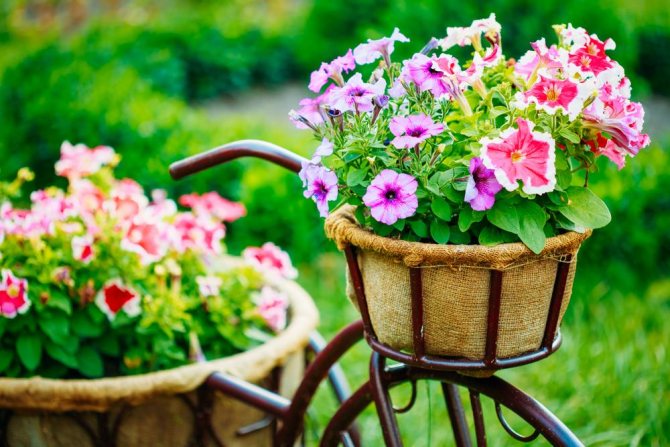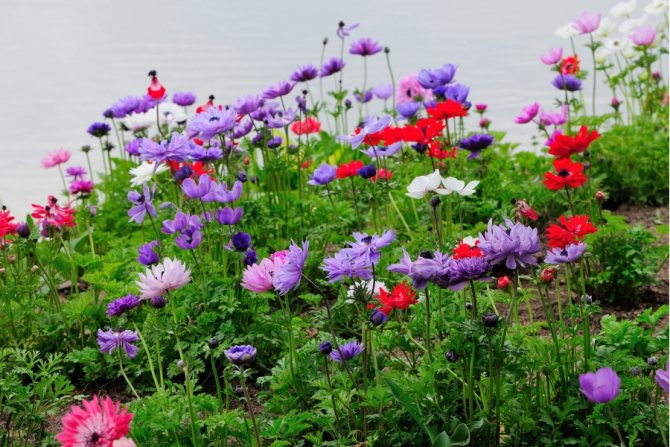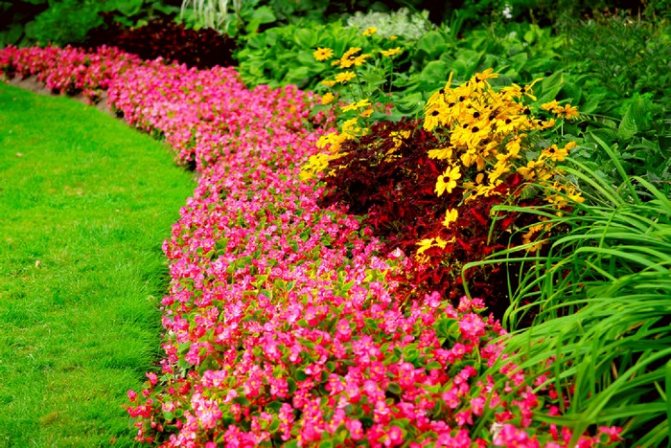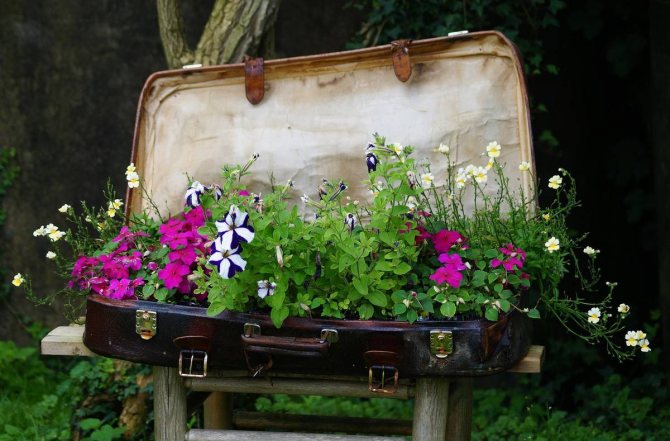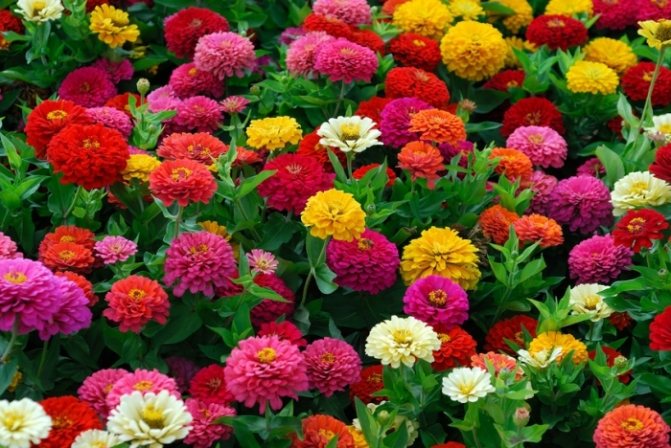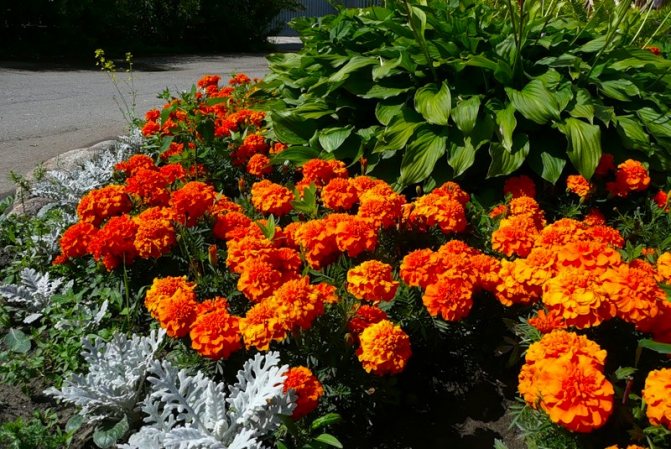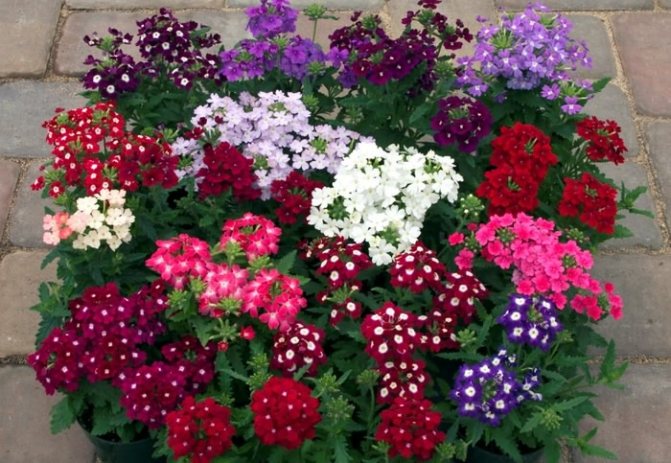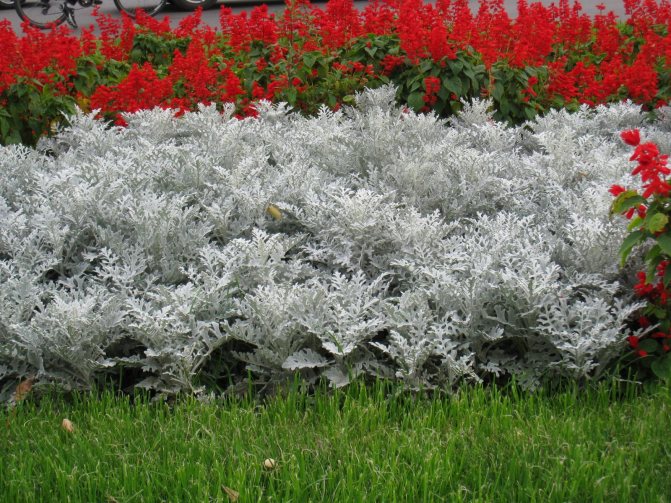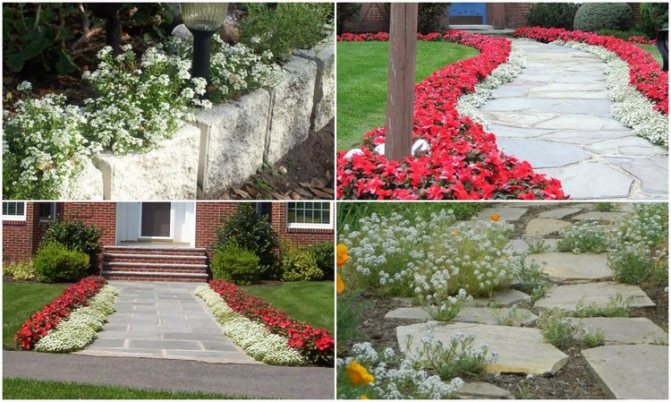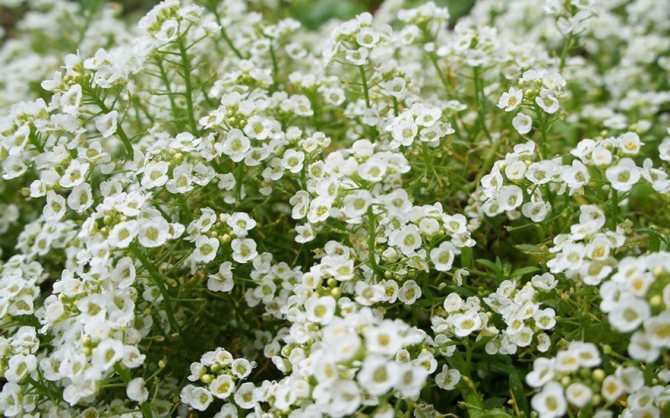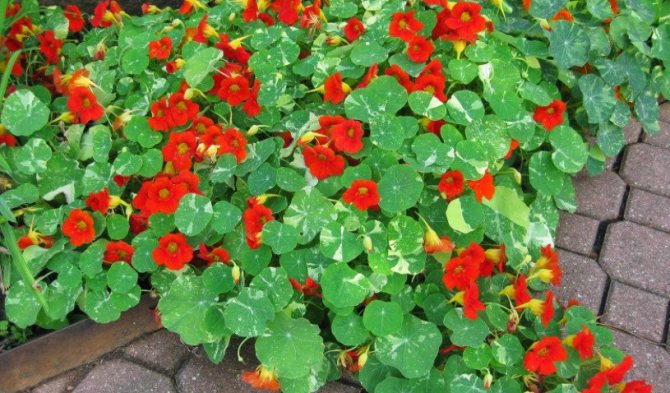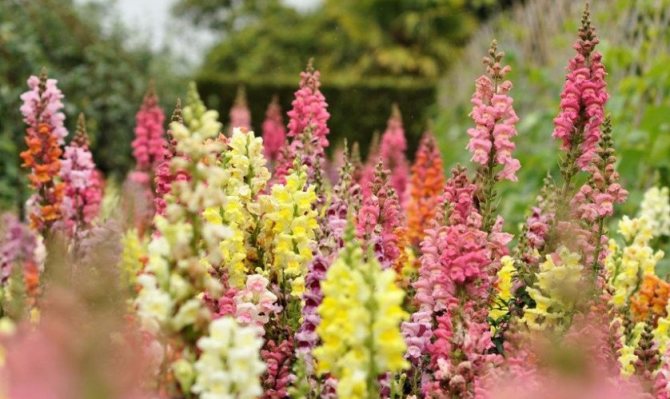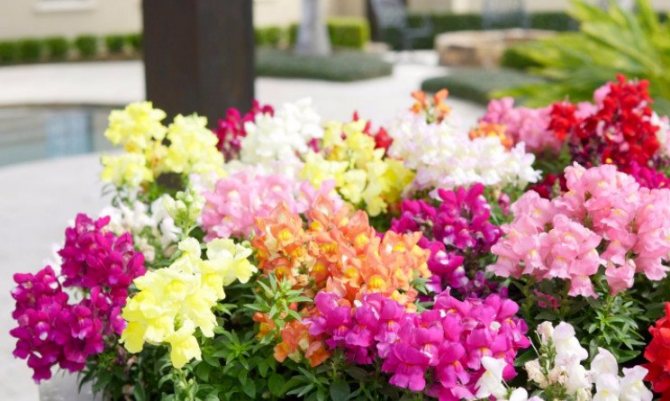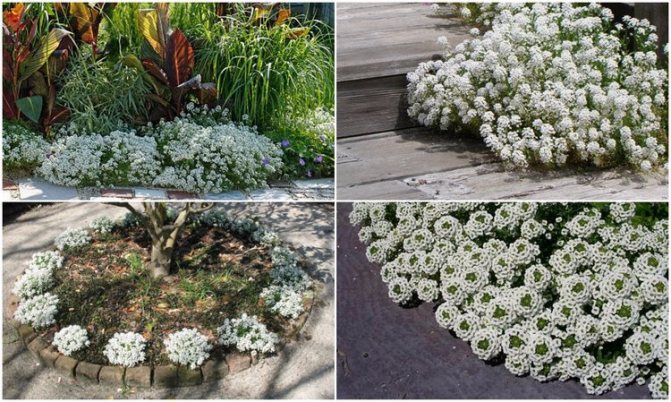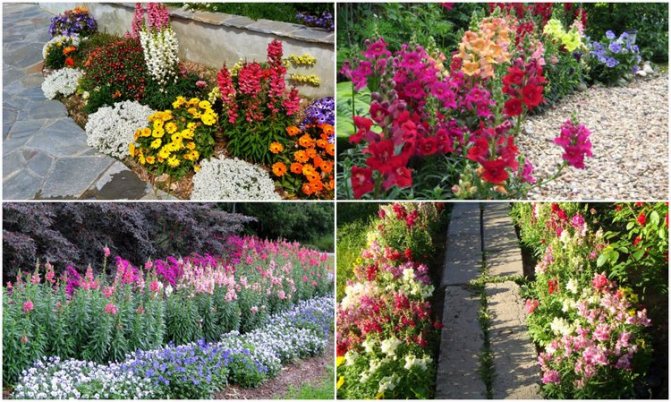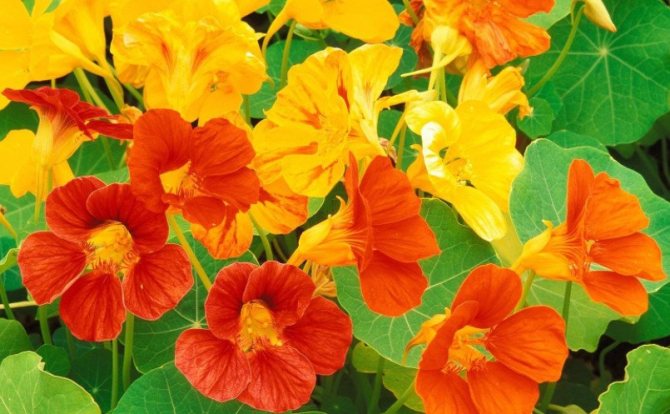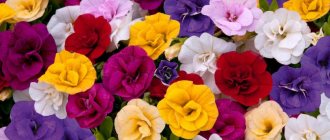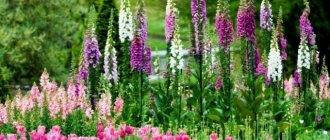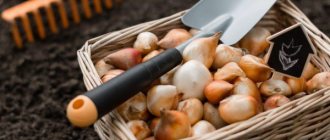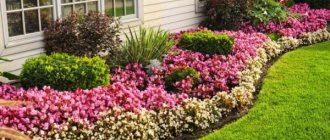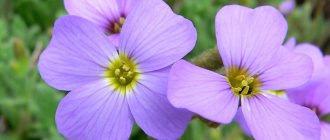Beautifully flowering plants, planted in the form of a border, are a favorite technique of landscape designers. Used in gardens in a variety of styles. Flowers for such plantings can be selected as annual and perennial. It is important to plant undersized plants so that the curb does not turn into a hedge. We will discuss how to choose spectacular crops, provide descriptions, names and photos.
Vines for a summer residence: how to use climbing perennials and annuals in landscape design
Climbing plants are of 2 types: annual and perennial. Annuals will delight the eye for one season, in the fall the shoots are pulled out, and the seeds are planted again in the spring. Perennial species are frost-resistant, growing in one place for several years. They do not develop as actively as annuals, and often reveal all their beauty only after 2 - 3 years.
Currently, ornamental plants are presented in a wide range. The area of their application is also varied:
- decoration of vertical surfaces of walls, gazebos, verandas, fences;
- creating a bright, beautiful composition in empty spaces;
- hedge to highlight different areas on the site;
- protection from direct sunlight for shade-loving crops and in recreational areas;
- attraction of insects - pollinators in the garden.
Annual vines often used to decorate new areas. Until the territory is completely landscaped, and trees and shrubs are low, climbing shoots allow filling the void and hiding unsightly places. To do this, it is enough to install arches or trellises - trellises and send beautiful vines along them.
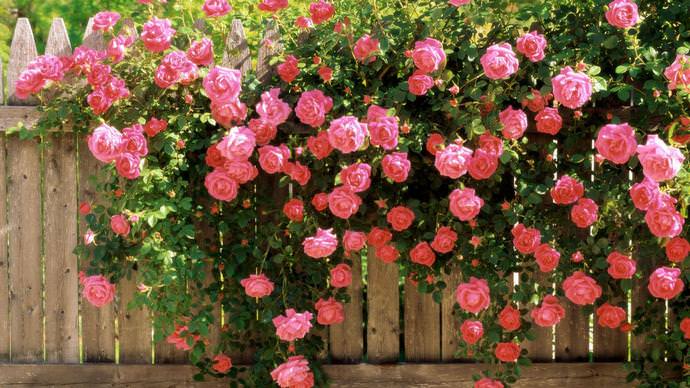
Annuals are unpretentious in care and make it possible to create a new composition every year. Their advantages also include the abundance of flowering. By the middle of summer, decorative vines cover the supports with a dense flowering carpet and wither only with the onset of frost.
Of the annual climbing plants, the most popular are: morning glory, sweet peas, climbing cobea, winged tunbergia, fiery red beans.
Perennials most often they have stiff shoots, which require strong supports. In some species, the stem is herbaceous. Each winter they die off, and in the spring they give young shoots.
Perennial ornamental plants do not need to be planted every year, this is their main advantage over annuals. Many of them, in addition to beautiful flowers and foliage, have edible fruits, such as honeysuckle, actinidia, black nightshade, tladiant.
Basically, perennials are planted near the house, on the veranda or near the gazebo. They provide shade, protect from dust, wind, enrich the air with oxygen.
Annual herbaceous plants
There are many annuals herbaceous plants... The most common are:
- linen
- peas
- marigold
- asters
- cereals
- cornflower
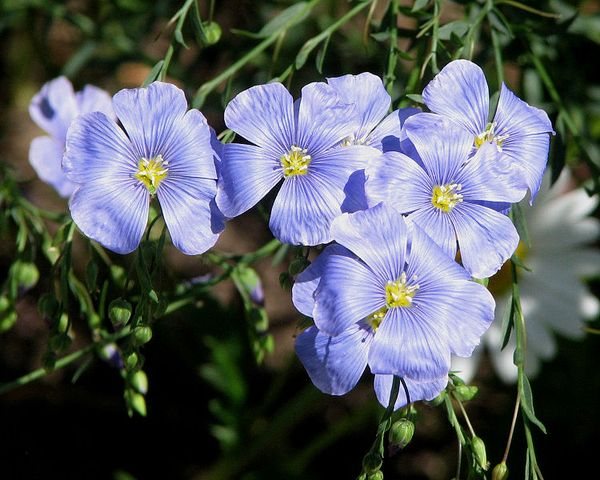

Linen
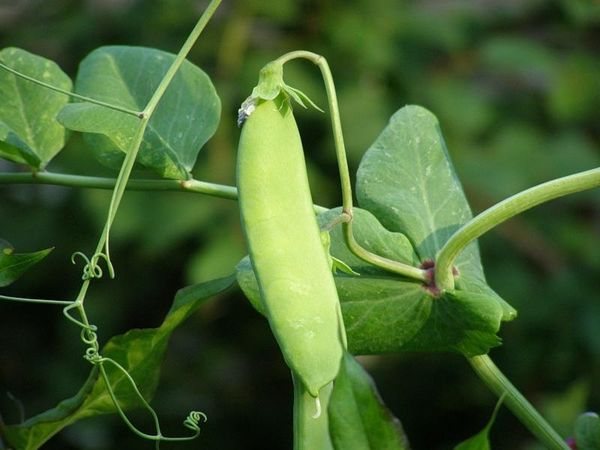

Peas


Marigold
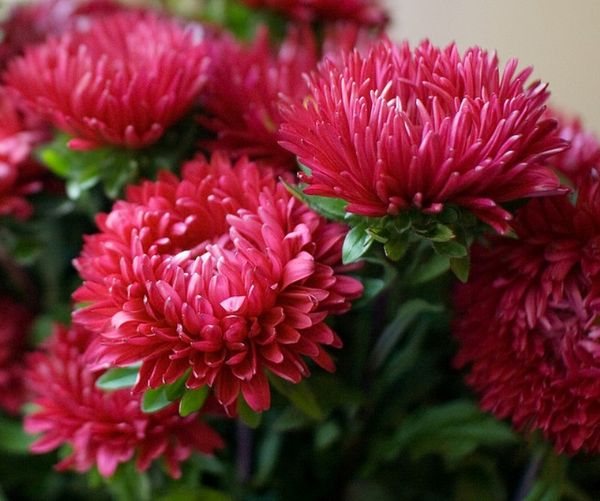

Asters


Wheat


cornflower
There are fast-growing annuals that are able to repeat their life cycle in one growing season. In some weeds, seeds ripen several times during the period. They are carried away by the wind, and they germinate and ripen again.
There are also plants long vegetative... Their seeds ripen by the end of the season. In winter they are perfectly preserved in the ground, and the next year they will be able to germinate.These include cereals, marigolds, asters, etc.
There are also annuals winter crops, these include some varieties of grain crops: rye, wheat, as well as cornflower, etc.
Decorative, decorating loggias, balconies, flower beds with their landscaping and flowers are widely used. Unpretentious, suitable for any climatic conditions.
Choosing perennial vines for the garden
Depending on what exactly the plant attracts attention, decorative vines are divided into 2 types:
- flowering - have particularly prominent flowers;
- decorative - deciduous - have beautiful foliage against the background of nondescript flowers.
The best flowering vines
Large-flowered climbing roses (Climing) are presented in several varieties. They stand out with large flowers ranging in size from 5 to 15 cm, most often they are collected in inflorescences of 5 pieces. The stems are tough, erect, 3 - 4 m high. All shoots are in bloom, therefore klaimings are considered one of the best plants for decoration. But compared to other varieties, they are less winter-hardy and often freeze out. For the winter, the stems are freed from foliage, twisted and covered with spruce branches, sawdust, foliage. In the spring, large shoots are left, the age of which is 1 - 4 years, all weak shoots are removed. At the dacha, varieties such as elf, don juan, indigoletta, santana, polka are most often planted.
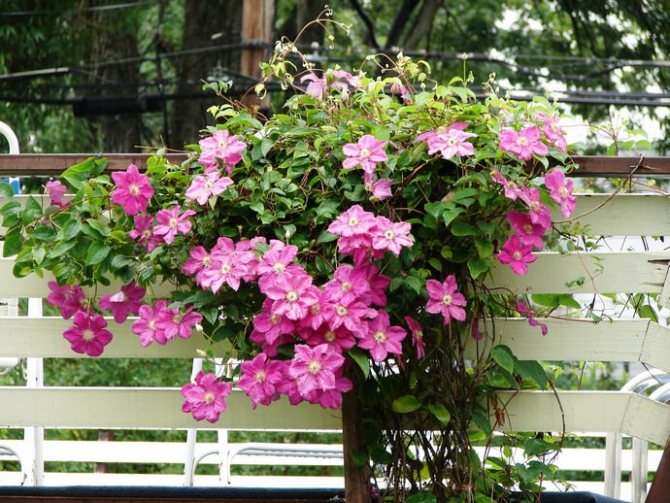

Clematis there are about 300 species. They have a well-developed root system, reach a height of 10 m. Flowers are often solitary, in some species they are collected in inflorescences. In large-flowered clematis, the size of the flowers is about 20 cm. Flowering lasts 3 - 4 months. The most popular varieties: integrifolia, lanuginose, florida, viticella, zhakmana, patens.
Campsis - a tree-like liana, which grows up to 15 m. It is fixed on the support with the help of air roots. Tubular flowers of orange or reddish hue are collected in paniculate inflorescences. Campsis is a honey plant and blooms all summer long. With its help, fences are beautifully decorated, which become invisible under a dense layer of greenery. Campsis tolerates winter well. It can often be found in the gardens of the Moscow region.
Wisteria belongs to the legume family, its fruits resemble elongated pods with seeds. The racemose inflorescences reach 30 - 50 cm. The feathery leaves are located on long stems up to 15 m high. The most spectacular and profusely flowering is Japanese wisteria. Its inflorescences are larger, white or lilac flowers bloom gradually from the base of the brush. Well adapted to cold winters, tolerates temperatures down to -23 ° C.
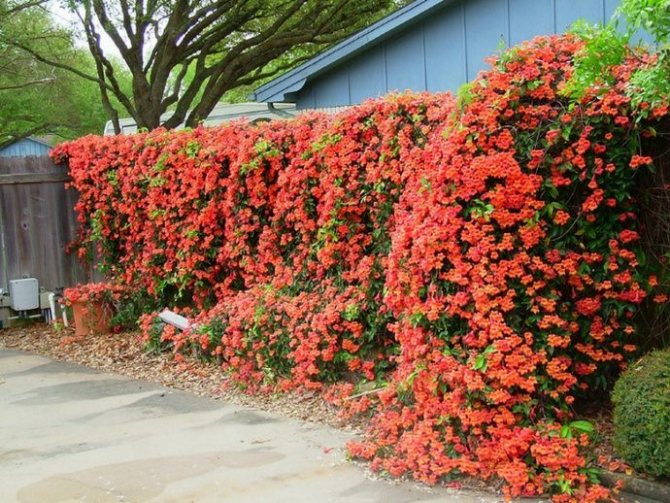

Curly hydrangea attaches to the support thanks to air roots and suction cups. It can reach a height of 10 m. It blooms with corymbose white inflorescences, in the middle of which there are small flowers, and larger ones at the edges. It develops slowly on mesh supports, it is better to decorate a tree or post with it.
Ivy calistegia has the ability to grow strongly, so it is not grown in flower beds. It is mainly used for decorating walls and gazebos. Beautiful pink flowers have a double form kalistegiya. The leaves are oblong, triangular in shape, the stems rise up to 2 - 4 m. Forms a fruit in the form of a dry capsule with one seed.
Azarina climbing is a climbing liana with tubular flowers consisting of 5 petals. It has many shades from white to purple. The branched stem reaches a height of 3 - 5 m. The leaves are velvety, ivy-like. Abundant flowering lasts from June to September. Azarina is thermophilic, therefore it is more often grown outdoors as an annual.
Honeysuckle honeysuckle - multiflorous shrub of the Honeysuckle family.The flowers are located in the axils of the leaves and are collected in 3 inflorescences, the color is white, cream, yellow, red. The leaves have a dense, leathery surface in the shape of an ellipse. Berries are orange-red, decorative, ripen in early August. Shoots entwining the support grow up to 5 m.


Dolichos (curly lilac) belongs to the legume family. The herbaceous stems are reddish in color. In the axils of the leaves, long racemose inflorescences are collected, consisting of 40 - 50 flowers. Dolichos fruits also look attractive. They are pods of a rich burgundy or purple hue with white peas inside. Dolichos is a tropical crop and can only hibernate in southern regions with a warm, humid climate.
Passionflower flesh colored has large single flowers of white, beige or purple color. It reaches a height of 9 m. The fruits of passionflower can be eaten, they ripen in September and taste like pineapple. Mainly grown in the humid subtropics of Abkhazia and Krasnodar Territory.
Vigna caracalla (snail grape) is distinguished by unusual flowers twisted in the shape of snails, for which it received its second name. Shoots cling to the support with antennae, reach a height of 7 m. It blooms from July to September. After flowering, pods with edible beans are tied. For the winter, it can be kept in the form of young cuttings.


Ornamental climbing plants without flowering
Ivy garden is one of the most common climbing plants. It clings to wall surfaces or supports using aerial roots. It can reach a height of 20 - 30 m. The leaf plates are dense, with a shiny surface. Ivy is unpretentious, grows quickly in any conditions and does not require special care.
Common hops is a dioecious plant of the Hemp family. The stem is hollow, covered with hooked thorns, reaching a length of 6 - 7 m. Heart-shaped leaves are attached to long petioles. It produces inflorescences in the form of cones, which have medicinal properties. The fruit is a flattened nut. Hops love light and moisture. It tolerates low air temperatures well.
Maiden grapes - large fast-growing liana. It has long climbing shoots, covered with reddish openwork leaves, which are collected in one rosette of 5 pieces. The root system is powerful enough. Grows actively in the sun and shade. It is one of the most unpretentious garden plants.


Coigne grapes (Japanese grapes) has large, dark green, egg-shaped leaf plates that turn red in autumn. It can reach a height of 20 m. It is fixed on supports with antennae. The fruits are black, differ in a bluish bloom, and have a tart taste. It grows quickly, so it is advisable to correct the lateral shoots.
Fortune's eonymus - a creeping evergreen shrub that is used as a hedge for planting tree trunks and borders. The composition is created by lateral shoots growing up to 3 m. The leaves of the euonymus are leathery, green with a white edging along the edge. The fruits are four-part capsules with seeds, contain a small amount of poisonous alkaloids.
Round-leaved woodworm it grows very quickly and can reach a height of 18 m. It has long curly shoots and short, straight ones. The stems cling to each other and can form a crown at the top. The leaf plates are oblong, with a pointed apex, are bright green in summer and bright yellow in autumn. The tree-nose pliers have especially attractive fruits. These are rounded bolls, which open when ripe and release orange seedlings.
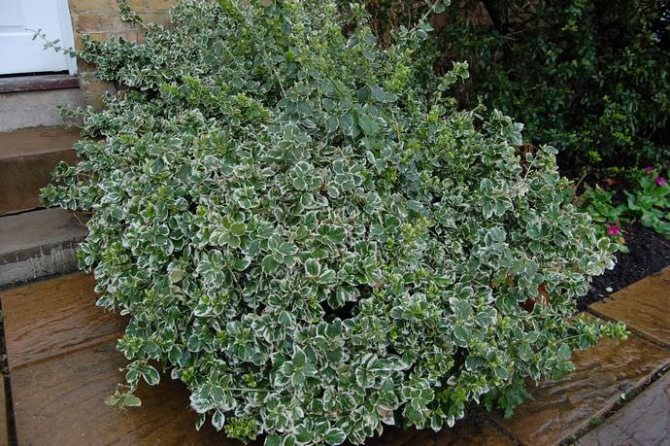

Rosyanika (curly blackberry) is a small shrub with long creeping shoots.It is fixed on trellises and reaches a height of 4 - 5 m. The leaves are trifoliate, with long petioles, on the lower side they have numerous hard hairs. The fruits are round, cone-shaped, purple and black, have a pleasant taste, and are used for medicinal purposes. Begins to bear fruit one year after planting.
Crops for a live border: photo
Perennial vines for Siberia: types and features of care
When choosing perennial plants wintering in the soil, it is necessary to take into account the climatic features of the region. For the Urals and Siberia, perennials with a well-developed root system, resistant to low air temperatures, are suitable.
Siberian prince - This is a shrub vine, clinging to the support with leaf stalks. The stems are ligneous, reaching a height of 3 m. The flowers are large, solitary, like a drooping bell.
Prince can grow in full sun and partial shade. Any garden soil is suitable for it. At the beginning of summer, you can add half a bucket of humus. In autumn, the aerial part of the vine dies off. The root system is frost-resistant, does not need shelter. Shoots grow quickly in early spring. Propagated by seeds, cuttings or dividing the bush.
List of fruit and vegetable crops
Basically, all gardeners plant fruit and vegetable crops on their plots in order to get a harvest. These are the cultures that in one period are able to give fruits and seeds... The list of the most famous and common include:
- tomato
- cucumber
- watermelon
- carrot
- potatoes
- zucchini


Tomato


Cucumber


Watermelon


Carrot


Potatoes


Zucchini
Now they grow various hybrids of vegetables that can give high yield, and more adapted to weather conditions.
Fruit and vegetable crops are of great importance to humans. They make up the main diet and are eaten both fresh and canned.
Liana in the garden: landscape tricks (video)
Actinidia kolomikta (Amur gooseberry) is a tree-like deciduous liana with thick stems reaching a height of 14 m. The leaves are large, oval, with a pointed end. The flowers are very fragrant, white in color, hanging on long stalks. They actively attract insects. The fruits are oblong, soft, reminiscent of gooseberries, are distinguished by a high content of vitamin C.
Actinidia loves light, loose soil. You can add sand, compost, a little humus to the planting pit. Its roots are actively spreading around, so the distance to neighboring crops should be at least 3 m. Prefers the sun, but grows in partial shade. Withstands winter frosts down to -40 ° C. Young shoots for the winter must be covered with sawdust or dry leaves. Propagated by layering, cuttings, leaves.
Ekkremocarpus (scrub rough) is a climbing plant with original tubular flowers collected in a brush. A distinctive feature is the formation of a large tuber in the soil, from the buds of which young shoots up to 3 m long grow. The leaf plates are complex-pinnate, at the ends there are small antennae. With their help, the ekremocarpus clings to the support. The fruits are green, in the form of small peppercorns with seeds.
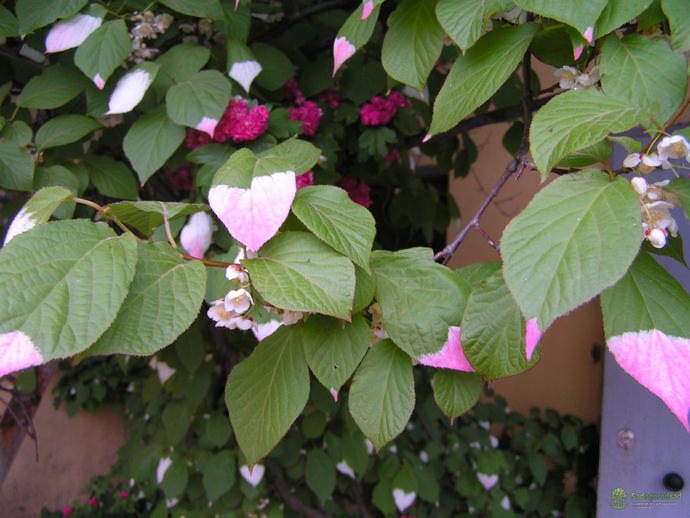

Hedgehog grows well in loose, nutritious soil. Prefers well-lit places and abundant watering. Propagated by seeds. Its aerial part dies off at the end of September. The tubers do not withstand severe frosts, therefore, in the climatic conditions of Siberia, it is recommended to grow ekremocarpus in containers. For the winter, they are removed to the basement.
Aristolochia Manchu (kirkazon) is a deciduous woody liana, reaching 15 - 20 m. The flowers have an original shape that resembles a curved tube. The leaves are large, heart-shaped, strictly symmetrical. The fruits are large, cylindrical, outwardly reminiscent of a cucumber.Kirkazon is often used in mixed compositions to decorate gazebos, pergolas, and arches.
Loves moist, fertile soil. Needs frequent watering. Grows well in partial shade. Propagated by layering, cuttings, seeds. In the middle lane, adult plants can winter in the open field, young shoots are covered with dry leaves or sawdust.
Schisandra chinensis - woody shrub with wrinkled brown bark. The sheet plates are elliptical with a wedge-shaped base. The flowers are small, collected in a racemose inflorescence. Edible fruits, collected in a spike-shaped raceme, are used for medicinal purposes.
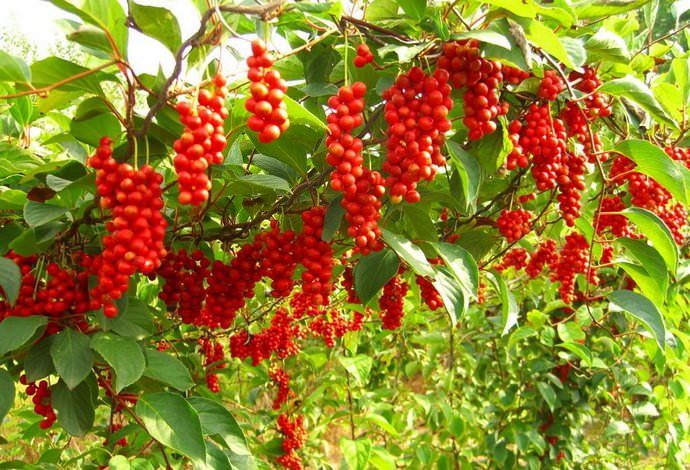

Lemongrass prefers good lighting. He does not like drafts, so it is recommended to grow it near buildings. Very picky about soil moisture and atmosphere. In extreme heat, additional spraying with warm water is necessary. Propagated by layering, seeds. Resistant to low air temperatures. For the winter, shoots are removed from the supports, covered with dry leaves.
Marigold
Marigolds are most accessible curb plants, the seeds of which can be purchased anywhere - both in flower shops and at the grandmother's bazaar.


The flower gained its popularity due to its unpretentiousness and decorative qualities. That is why, on its basis, countless color variations have been created, which differ in the height and diameter of the bud.


Marigolds belong to the Asteraceae family, have a branched stem and dissected leaves. Flowers are double or semi-double. Depending on the variety or hybrid, they can have a different color (all colors are warm).
Important! Before buying flowers for the border, it is worth clarifying whether this variety is annual or perennial.
Low-growing marigolds can have a height of 20-30 cm, tall ones - 60-80 cm. Depending on the height, the diameter of the bud also varies. The smallest flowers have inflorescences 3-5 cm in diameter, the largest - 10-12.


The plant is used not only for landscaping or creating flowering borders, but also to combat nematodes that infect many plants popular in the garden.
Did you know? The first connoisseurs of marigolds were the Aztecs, the indigenous inhabitants of modern Mexico. They called these flowers "sempoalsucitl" and sowed them in their gardens.
Popular annual decorative vines
Morning glory - a luxurious liana with numerous funnel-shaped flowers. It grows very quickly and reaches a height of up to 4 m. It clings to the support with the help of numerous antennae. The leaf plates are heart-shaped. The fruits are presented in the form of a spherical box. For decorative purposes, about 25 species of morning glory are used.
Kobeya climbing - fast-growing shrub with flexible shoots. It has large bell-shaped flowers. Leaves are cordate, consisting of 3 lobes with tendrils at the ends, with which the plant is fixed on supports. The stems reach a height of 6 m. The genus Kobei has 9 species.


Sweet pea - unpretentious garden culture used for decorative landscaping. Numerous inflorescences are brightly colored and have a pleasant aroma. The root system is well developed. Can reach 3 m in height. Currently, there are about 1000 known varieties.
Bindweed tricolor it is distinguished by an abundance of flowering and greenery. The leaf plates are oval, bright green in color. Funnel-shaped flowers with wavy edges are located in the leaf axils. There are about 150 species of bindweed.
How to choose the right undersized annuals
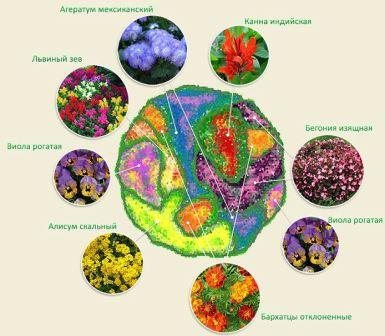

Flowers love a large abundance of sunlight, therefore, flower beds of low-growing annuals are located in unshaded areas with moist soil. If the flower garden will consist of several varieties, it is worth considering a number of important factors:
- Low-growing flowers of different varieties are selected with identical requirements for growing conditions.This concept means the composition, nutritional value and moisture content of the soil, the degree of illumination of the flower bed.
- Combine annual crops in color groups. It is good when each variety stands out with contrast or the color of different inflorescences complements each other.
- Annuals are border, ground cover, undersized, medium, tall, weaving. They are placed in the flowerbed taking into account their growth so that the tall stems do not cover the small flowers.
When creating a composition of flower beds from annuals, the time of the beginning and end of flowering is additionally taken into account. For example, begonia blooms in spring, marigolds in summer, and asters from late summer or early autumn. When choosing a place for planting, take into account not only the illumination of the site and the type of soil. For each architectural structure, annuals are selected according to their height. In the front garden or near the garden paths, stunted and border flowers, for example, nasturtiums, are planted. It is optimal to arrange tall or climbing plants near the fence. Flowers in the form of petunia or sulfinia are suitable for pots.
Low-growing annuals for flower beds
Plants up to 30 cm in height belong to the group of low-growing flowering annuals. Flowers are sometimes used as ground cover ornamental crops if it is required to fill the resulting void in the flower bed. Low-growing annuals look good between rose bushes or other ornamental shrubs. Flowers form a carpet in the meadow. A striking example of the undersized group is the night violet, Iberis. Daisies can be used instead of one-year-olds for edging curbs.
Curb annuals
An important role is assigned to undersized border annual flowers when creating a composition. Annuals are selected in contrast to the surrounding plants. If the arrangement of a colorful flower garden is supposed, the border flowers are chosen in white, light blue or silver. Neutral edging visually prepares vision for brighter colors.
Borders are equipped with a width of up to 50 cm. The border varieties include all annuals up to 40 cm high. Plants are characterized by resistance to heat and rain. Curb annuals recover quickly when trampled or mowed by the mower.
Important! Curb annuals should not be fertilized. The green mass is sensitive to nutrients and grows quickly, which is unacceptable for this group of plants.
Groundcover annuals
The ground cover flowering annuals got the name because of their structure. Ornamental plants are covered with carpet on the ground. The inflorescences are usually small, but they often grow so many that you cannot see the foliage. Ground cover crops are planted in the garden, decorate an alpine slide, and are placed between stones. Small plots are allocated for annuals. They can fill voids in flower beds among other plants. Ground cover flowers are sometimes used as border crops to decorate the border.
Advice! Groundcover annuals can be planted in a flower bed between perennials to fill voids.
In the video, a review of ground cover annuals:
How to care for vines (video)
Thunbergia winged (Black-eyed Suzanne) has bright large flowers on long pedicels, collected in inflorescences. Leaves are ovoid with jagged edges. It can be up to 6 m in height. In the open field, it is grown as an annual. About 200 plant species are known.
Decorative curly lianas are very popular with summer residents. With their help, you can create unusual compositions that will delight and delight with their beauty throughout the summer season.
Coreopsis
Coreopsis, or "flower of the sun", came to us from North America and was warmly received by many gardeners. The genus has at least 120 species and countless hybrids that are still being bred to this day.
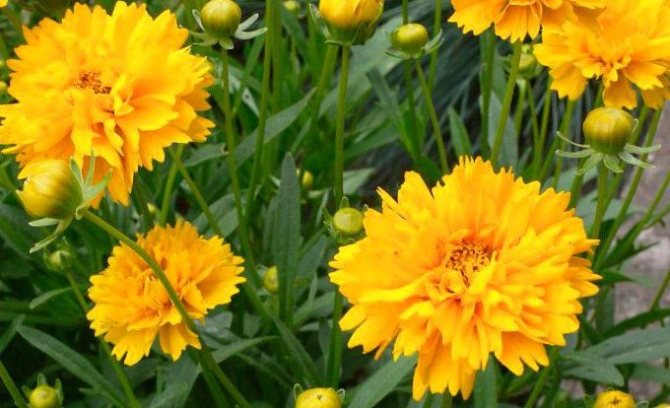

The people often call the flower "lenok" or "Parisian beauty".
As in the case of marigolds, varieties can be both annual and perennial. For disembarkation green border annuals are used, which should be considered when choosing a species or hybrid.
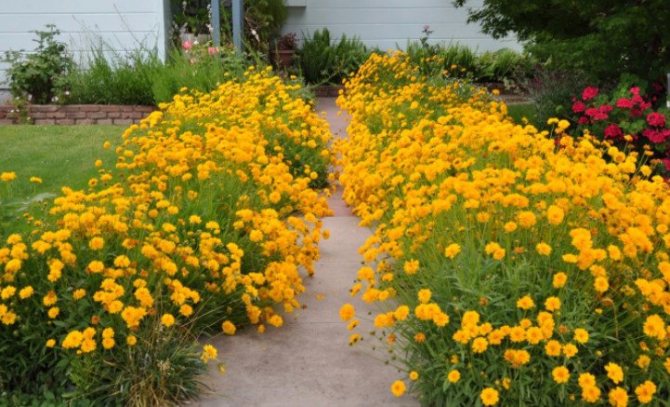

Coreopsis has an erect stem, finger-split or pinnately dissected leaves. Inflorescences are baskets on a thin stalk, which are colored yellow or darker shades. The height varies from 45 to 120 cm (low variations are used for the border), the diameter of the inflorescences is 4-10 cm.


The annual coreopsis has a small height (30–50 cm). Dwarf plants may not grow up to 20 cm. Most often the following species are used as annuals: Drummond, dyeing, feruloliferous.
If you want to form a border of perennial flowers, use dicenter, balsam, bells, lilies of the valley, chrysanthemum in the decor.
Five year plan
Consistency, on the other hand, has its advantages. Perennials may not last forever, but they make up many of our favorite garden plants, including roses, asters, poppies, peonies, hosts, and several types of grasses and shrubs. All of these plants grow year after year.
Their long life cycle not only saves us from the effort of replanting, but also allows us to shape and care for gardens over the years, as anyone who has ever tried to grow a rose bush will say. The one-off price tag of perennials is another important asset to consider.
In some cases, it is even possible to divide perennials and grow them throughout the garden. It should also be remembered before buying that perennials take much longer than annuals, especially if you start with seed.
Seedless growing method: sowing time
The most cold-resistant annuals are sown from April 20 to May 1. These are calendula, kosmeya, samoseyka poppy, escholzia, mountain cornflower, lobularia, summer adonis.
From May 1 to May 15, asters, godetia, annual delphinium, lavatera, sweet peas, chrysanthemums are sown. From May 15, you can sow all heat-loving, rapidly developing annuals. To prolong flowering, cold-resistant species are sown in June-July, which will bloom again in August.
It is better to sow some annuals before winter: firstly, in summer they will bloom earlier, and secondly, you will create better conditions for their development: the seeds will wake up in early spring, when the ground is still wet and cool.


Before winter, they sow: godetia, calendula, summer adonis, cornflower, Ajax delphinium, Drummond phlox, clarkia, double-pinnate and sulfur-yellow space, lavatera, lobularia, samoseyka poppy, matthiola two-horned, Californian escholzia, chrysanthemums.
Usually they are sown in two terms: in late October - early November or in December-January. When sowing in winter, it is important to observe several conditions: sow on completely frozen soil, otherwise the seeds may hatch into a thaw and die in frost, prepare the soil and the plot in advance so that melt water does not wash away the seeds in spring. Crops from above are mulched with soil mixture (compost, humus with sand, peat with sand), covered with snow to protect from birds.
What to look for when choosing plants?
When planning to supplement a perennial flower garden with several varieties of plants for one season, or wanting to create a flower bed entirely from annuals, you need to take into account a number of factors:
- Flowering period. All annual garden flowers are famous for their long flowering, but still some of them ripen earlier and others later. Among the spring can be distinguished: pelargonium, begonia, petunia. Already from the beginning of June, zinnia, marigolds, marigolds and cornflowers will appear. And until late autumn, flower beds will be decorated with: aster, lavatera, snapdragon and calendula.
- Planting site. When arranging a front garden, low and colorful marigolds, nasturtiums and cornflowers are perfect. An effective decoration of the fence or the walls of the gazebo can be: decorative sweet peas, morning glory or curly beans. Geraniums, begonia, petunia are well suited for planting in containers.
- Palette. Choosing beautiful flowers for the garden, every gardener gets a great opportunity to paint his area in his favorite shades.
Annuals are sun-loving plants. In all their glory, they appear only in a rich, sufficiently humid area, well-lit by the sun's rays.


You can bring bright yellow colors to a blooming green garden by planting coreopsis, calceolaria, sunflower and snapdragon


To dilute the composition with blue tones, you can plant Russell's eustoma, brachycea Iberis, cornflowers or bindweed


Bright strokes of red can be easily added with the help of the beauty of salvia, balsam "lights" or terry "pom-poms" of stock-rose
Types of flower beds with annual flowers
It is from the annual plants on the plots that you can create a luxurious landscape that changes every year. Planting in flower beds and in modular (portable) flower beds is especially popular. The flower beds are represented by flower arrangements of a certain shape and border. They are round, square, rectangular, it all depends on the preferences and desires of the owner of the site. The main requirement for saturation of the flower bed is that the composite elements are located in the same plane, that is, tall, up to one and a half meters, the flowers do not block the sun's rays for lower varieties. Planting is carried out with a kind of "ladder", ranging from undersized varieties to tall ones. Modular flower beds are also welcomed by gardeners. Small containers or plastic boxes and boxes are used for them. They are not large in size and the main feature is that, modular flower beds are portable, a box of flowers can always be moved to a more sunny place, or, if necessary, decorate a resting place in a gazebo.
What to choose in Siberia and the Far East
The climate in these regions is more severe, so flowers should be chosen in accordance with the approximate level of precipitation and the average air temperature. Most often, gardeners choose the following:
- Gypsophila;
- Cosmey;
- Celosia;
- Thin-leaved marigolds;
- Chinese aster.
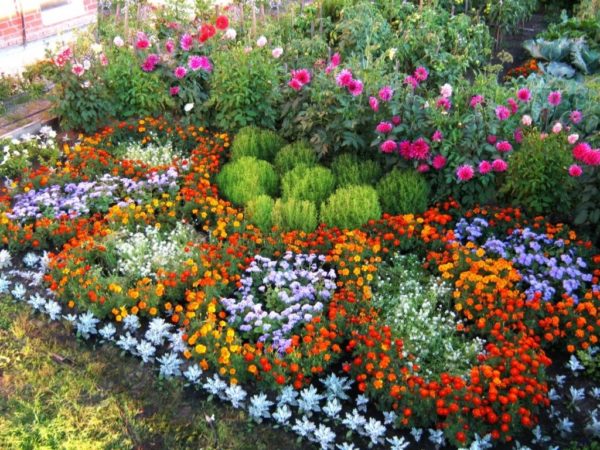

An example of flower bed design
However, in the southern regions of Siberia, it is possible to grow some plants intended for the Southern Urals and Central Federal District.
Sowing seeds for seedlings
Pour a drainage of expanded clay, gravel or broken brick 1 cm thick at the bottom of the container.Then place a moist (but not too wet!) Substrate so that about 2 cm remains to the top of the container.
Sow large seeds in the pre-made grooves to a depth equal to three times the size of the seed, and tamp the soil lightly. Sow medium-sized seeds in the grooves too, but sprinkle with soil only lightly (its layer should not exceed 0.5 cm). Mix very small seeds with dry sand, scatter over the soil surface and water with a spray bottle.
Cover the container with glass or plastic wrap and place in a warm place. Please note: until shoots appear, the soil should always be slightly moist. After germination, remove the glass or film and keep the plants at a temperature of about 20 ° C. When the seedlings grow up, sprinkle their stems with light earth a little and place the plants in a well-lit place with a temperature of 15 ° C.
Biennials
This group includes carrots, beets, many medicinal, fodder and weeds (marshmallow, sweet clover, henbane, mullein). Biennial and annual plants differ in the time of the appearance of the stem, on which flowers and fruits with seeds can form. So, in the first year of life, biennials form only a rosette of basal leaves. In the second year, stems, flowers appear from the rhizome, fruits are tied and seeds ripen.After that, biennial plants die off. This large group includes wild species that are widespread in temperate climates.
What is a pick and when is it carried out
Plants dive in the presence of two leaves. The sprouts have already completely switched to root nutrition, and the seedlings are still small. Thus, it is not damaged during transplantation.
Important! Plants with complex stems such as Lubelia should be replanted with 4 - 5 leaves. Everything happens in a fairly standard way.
Instructions for conducting a pick
Step 1
Prepare cups for seedlings, purchased in advance in a store or other containers. They need to be filled with nutritious soil. In the center, you need to make a small depression.
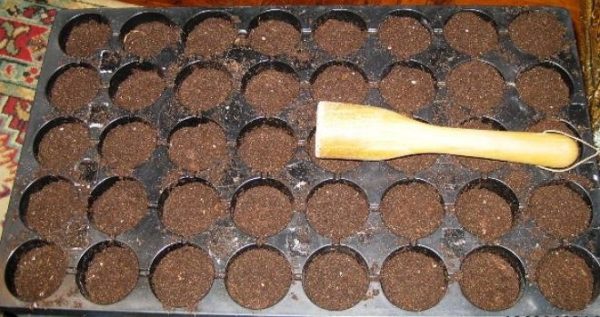

Cups with soil
Step 2
The sprout is carefully removed from the seedling box. You can use a spatula for this. It is important not to damage the root system.


Sprout from the box
Step 3
Placing the plant in a glass. There is one flower per container. Thus, its root system can grow.
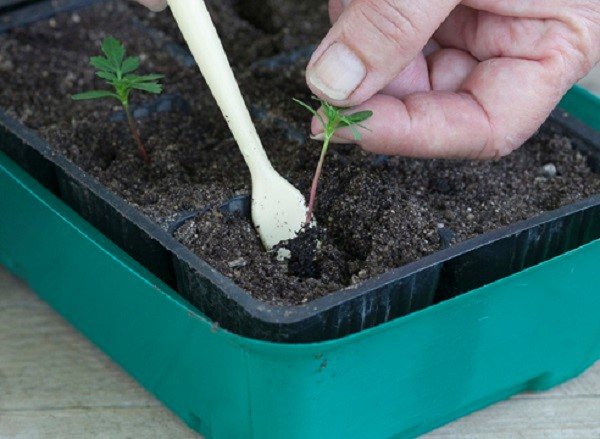

Moving the plant
Watering the soil after transplanting is required only when the top layer dries out. When the sprouts take root, they can be watered as usual, and also pinched so that the flower takes the shape of a bush.
Lobelia
A genus of annual and perennial herbaceous plants, shrubs and shrubs, native to South Africa.


A branching plant, bushes have a compact spherical shape. The height of the lobelia varies from 10 to 35 cm. The leaves are alternate, small, lanceolate. The flowers are colored blue and its shades, have a diameter of up to 2 cm.


To create a live border, use 3 garden forms: climbing (length of shoots up to 35 cm), erect (height - up to 25 cm) and compact (height - 10-15 cm). The most popular are lobelia erinus and lobelia daily.
Perennial lobelia is grown as a one-year-old in the middle climatic zone.
Did you know? Some types of lobelia are raw materials for the production of medicines used for diseases of the lungs.
Cold-resistant flowering annuals for the Urals and Siberia
Popular annuals for Siberia and the Urals are characterized as undemanding plants with sufficient cold resistance with abundant and attractive flowering during the summer-autumn period. Experienced flower growers prefer to grow summer plants in a seedling way, but there are some species that are perfectly suited for direct sowing on open ground flower beds.


| A type | Name | Landing scheme | Flowering time | Lighting requirements |
| Seedling | Marigolds erect and thin-leaved | 20-25 x 20-25 | July - October | Average |
| Chinese aster | 20-25 x 20-25 | July - September | High | |
| Celosia | 20-25 x 20-25 | July - October | High | |
| Purslane | 15 x 15 | July - September | High | |
| Direct sowing | Cornflower | 20 x 20 | July August | High |
| Clarkia | 20 x 20 | June - September | High | |
| Gypsophila | 20-25 x 20-25 | July August | High | |
| Kosmeya | 35-40 x 35-40 | July - October | High | |
| Mood | 25-30 x 25-30 | June - September | High |
Chrysanthemum maiden
Chrysanthemum maiden is perfect as flowers for the border, another name is maiden's matrix.
This is a representative of the Aster family, which is used by gardeners as an annual due to the fact that it is extremely difficult to keep the plant in winter in the middle climatic zone.


In appearance, the flowers of maiden chrysanthemum resemble a large chamomile and retain the same color. Inflorescences 3-4 cm in diameter. Plant height varies from 25 to 70 cm. Leaves are pinnately dissected, light green in color.
Chrysanthemum fell in love with many gardeners for the reason that perfectly withstands drought, cold and grows on almost all more or less fertile soils.
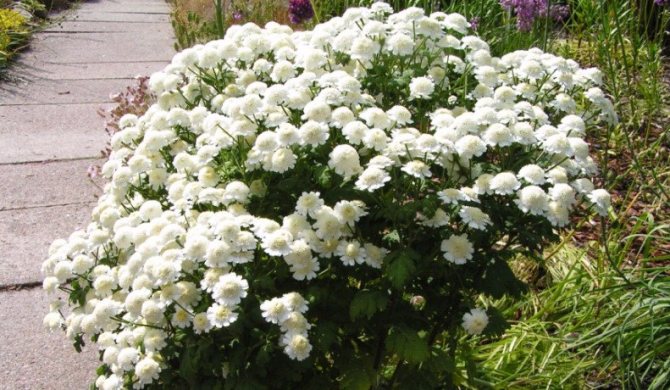

For planting on the curb, dwarf varieties are used in their pure form, or in tandem with ageratum.
Did you know? The name "maiden chrysanthemum" comes from the fact that the action of the plant can relieve pain and inflammation that occurs in girls during menstruation.
Rules for choosing flowers for a summer cottage
It is necessary that everything is in harmony, so you cannot choose white, blue, red, black and other plant colors. Gardeners today follow several rules to create a beautiful garden. In doing so, they are forced to take into account several important nuances.
- Climatic conditions. If the summer is rather cold, then you need to choose plants that can adapt in this case.
- Landing site. There are light and shade-loving flowers. Thus, it is necessary to choose the right place to get the strongest and most beautiful inflorescences.
- Flowering time and color range. It is important that the inflorescences appear one after another or all together. The ensemble will make the garden really beautiful. But at the same time, you must choose seeds of a suitable color scheme. It is also possible to create patterns on the lawn using plants of different colors.
- Features of the landscape and the size of the garden area. If there are several hills, then you can smooth them out by planting low-growing flowers on them. In this case, there should be tall ones nearby. Then it will visually seem that there is no bump.
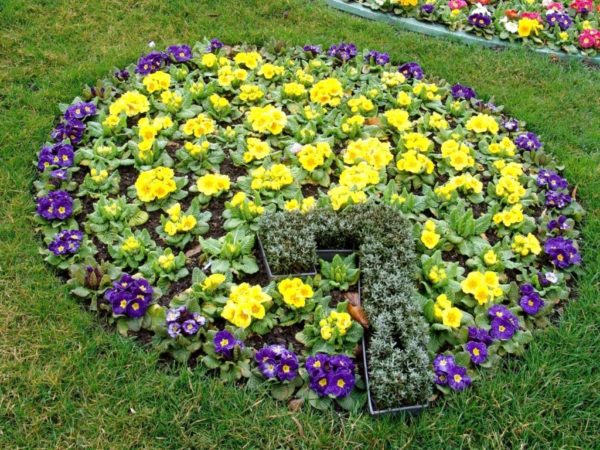

Decorative flower bed
Thus, choosing colors can be challenging. You can contact a professional designer. It will draw up a plan of where the flower beds should be and what varieties of plants you want to use on them. However, this service is paid.
You can read about unpretentious flowers for a flower bed, which will delight the eye all summer, in our article - here.
Video - Flower garden design
Planting instructions for annual flowers
It is worth considering how to properly prepare seeds, germinate them and plant them in the ground so that the flowers are healthy and beautiful.
Step 1
If the seeds are bought, then they have already passed the stage of disinfection and calibration. In this case, there is no need to waste time. However, consider the option of self-harvesting seeds. In this case, you need to clean them of debris.
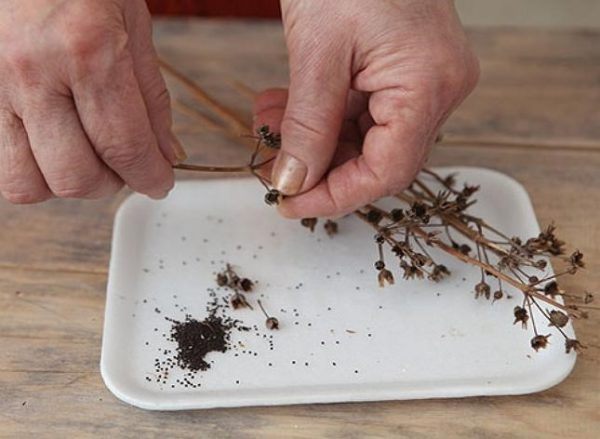

Cleaning seeds from debris
Step 2
Carrying out statisation is necessary for most one-year-olds. There are several ways to do this. The bottom line is to simulate winter conditions. Most often, seeds are covered with soil, placed in a damp cloth and container, which should be in the refrigerator for up to two months. If necessary, it is required to moisten the soil.


Validation is an important procedure
Step 3
Disinfection for the destruction of harmful microorganisms. For this, a fungicide solution is used.
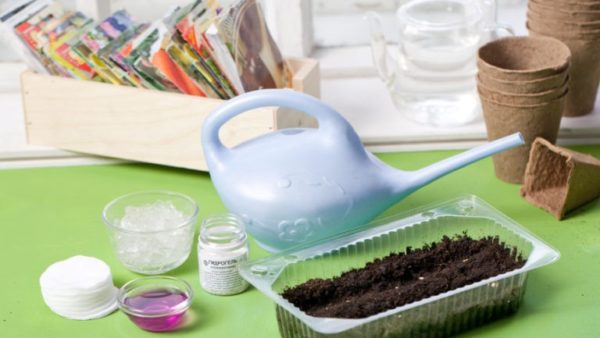

For disinfection, use a fungicide solution
Step 4
Scarification (optional) is used to speed up germination. It takes a little damage to the seed with sandpaper or a needle.


Scarifation
Step 5
Soaking immediately or the next day after disinfection so that the seeds germinate. Warm water is required. Typically, the process lasts from several hours to one day.
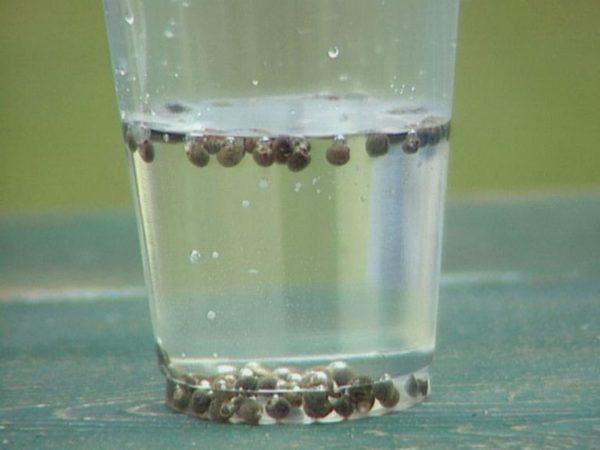

Seed soaking
Step 6
Stimulation using various solutions. Then the buds will appear evenly.
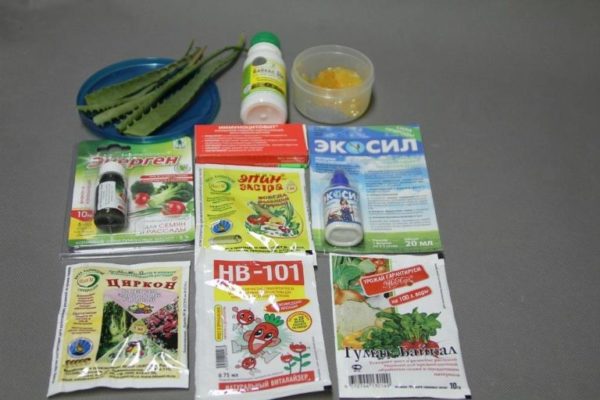

Stimulation solutions
Step 7
Preparing soil and seedling boxes. It is necessary to choose the appropriate type of soil so that the flower rises faster. It is recommended to buy land in specialized stores. It is saturated with the required trace elements.


It is better to buy land in specialized stores.
Step 8
Sowing seeds. Professional gardeners pour soil into the box and level the soil to create a groove of the required depth. Prepared seeds are poured into it, they are poured into it and watered.


Sowing seeds
Important! Watering should be carried out as the soil dries up, unless otherwise provided by the instructions on the seed packaging.
Video - How to properly sow sprouts using the example of marigolds
Care rules
Most of the one-year-olds are quite unpretentious, so they do not require special care. However, some effort needs to be made to keep the buds strong and keep blooming all year round. In particular, you will need to do the following:
- water periodically (it is necessary to study how the flower relates to moist soil in order to determine the optimal number of waterings per week);
- remove weeds, as they are capable of suffocating the roots of cultivated plants, taking all the nutrients from the soil;
- loosen the soil so that oxygen is better supplied to it, since when it is lacking, the leaves of plants turn yellow;
- remove dry leaves and buds so that the root system can most effectively distribute nutrients, letting them mainly into new buds;
- carry out feeding.
Important! It is necessary to choose the right type of feeding. It doesn't have to be dung. In particular, you can use various mineral fertilizers purchased from specialized stores.
At each stage of a plant's life, different feeding is required. It is necessary to study what fertilizers and when to use in a particular case. There is no universal recipe in view of the variety of one-year-old flowers.
It is recommended to treat plants from pests 3 - 5 times per season. Otherwise, flowers can shed their foliage, stop flowering prematurely, and so on. For plants with high stems, it is important to provide support. The pegs can be made of wood or metal. The garter is carried out when the flower is tall enough.
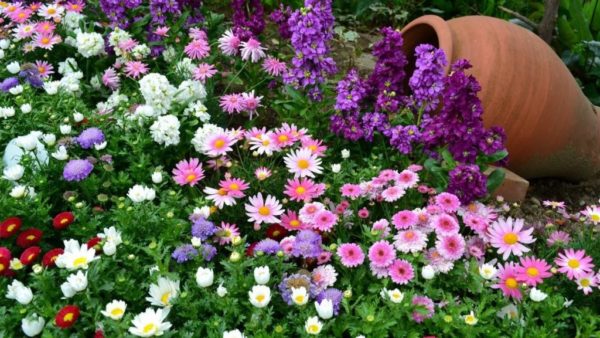

Design version of the flower bed
Things to consider before boarding
Annuals with a short growing season are characterized by unpretentiousness and suitability for cultivation in any climate. Preference should be given to those of them that are capable of pleasing the eye from early summer to autumn.


Plant height also plays an important role. You can not plant tall flowers in the foreground... Front gardens should be designed with the participation of plants of low and medium growth. If the territory is small, then it is not necessary to plant a bush flower there, it is better to create an alpine slide or something similar.
Advantages and disadvantages
A rare perennial bloom in the first year of planting, and annuals will decorate the garden very quickly. Summer plants bloom throughout the season, are indispensable in the creation of carpet beds, where line accuracy is important. Perennial flowers, growing, will disrupt the outlines of such flower beds, and annuals will retain clear compositional planning.


With the help of annuals, you can easily update the landscape design of the garden, because they only grow for one year. For those gardeners who love to transform their site every year, to break new flower beds, planting annual plants will be a good help.
Of the shortcomings, first of all, one can single out the fact that certain types of annuals are grown by seedlings, and this is additional concern for maintaining the necessary conditions (light and humidity).
Brief characteristics of crops
These crops are actively used in decorative floriculture. They are rarely left to winter in central Russia, since the winters are quite severe. Thus, the seeds can die due to exposure to low temperatures. Reproduction takes place by seeds. At the same time, there are three rates of seed ripening:
- up to 70 days early ripening flowers (calendula, poppy, mignonette, kosmeya);
- up to 120 days mid-season (zinnia, snapdragon);
- up to 180 days long-ripening (verbena, lobelia).
When self-breeding seeds, you need to understand how long they ripen and how to get them correctly. If the necessary processing is not available, then it is impossible to obtain quality flowers that will adapt to life on the street.
Therefore, gardeners usually buy ready-made seeds from specialized stores. They are completely ready to plant. In this case, the probability of germination reaches 80%, which is considered a high indicator. With self-distribution and sorting, germination can be kept at 40%.
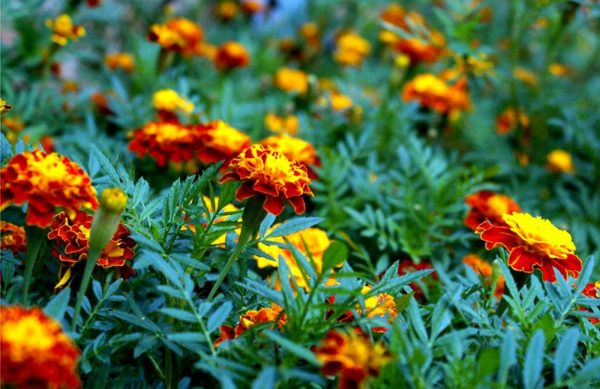

One-year-old flowers
Native Perennials
Perennial plants that are native to a particular region offer the added benefit of creating a favorable habitat for local wildlife. Beneficial insects and animals depend on local perennials for food and shelter, and their presence in the garden will help attract pollinators and repel pests.
These plants also tend to require less water and maintenance as they are already adapted to the surrounding climate. This can be especially beneficial for those who live in arid regions and want to reduce their water consumption.
Biennial plants
As if these two options didn't have enough pros and cons to weigh them in, there is a third category of plants: the biennial. These plants take two years to complete their growth cycle before dying. Usually biennials bloom not earlier than the second year.
Spring annuals
Plants of one growing season have time to complete their life cycle in a few months. So, in spring annuals, seeds germinate in late winter - early summer, a shoot is formed, flowering begins and ends. Fruiting ends with the death of the entire plant. What annual plants are called "winter"? Those that germinate from seeds in the fall, and wintering is carried out in the form of a shortened shoot, usually consisting of a rosette of basal leaves.
